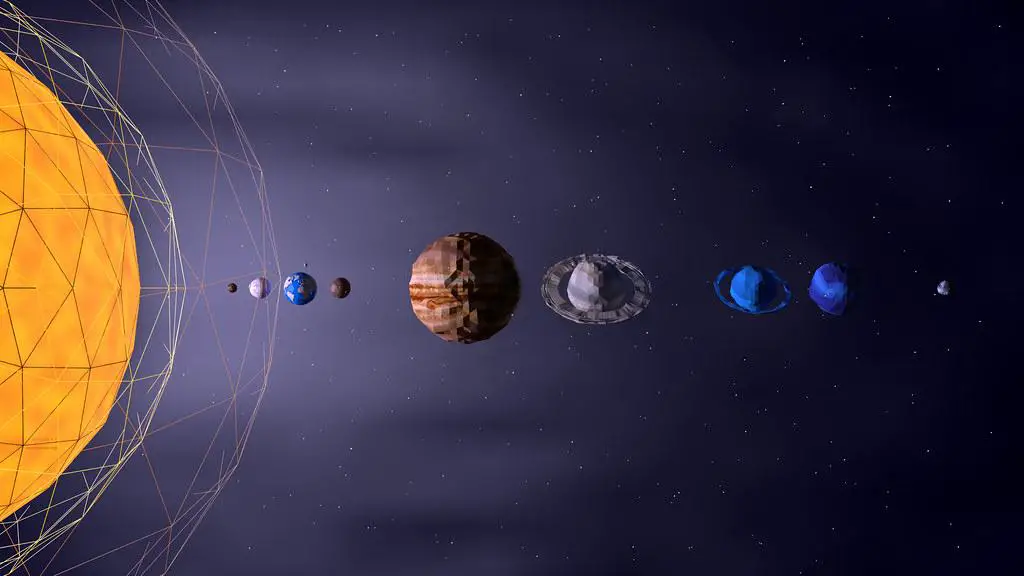Our solar system presents a captivating array of planets, each with distinct characteristics. From the rocky surfaces of terrestrial planets to the gas giants' swirling atmospheres, and the icy regions of dwarf planets, there's much to learn about these celestial bodies. This journey through our cosmic neighborhood offers insights into planetary formation and evolution.
Terrestrial Planets
Mercury, the smallest terrestrial planet, has a rocky composition with a metallic core. Its surface is covered in craters from meteor impacts. Temperatures swing dramatically from 840°F (450°C) during the day to -290°F (-180°C) at night. The thin atmosphere, primarily composed of oxygen, sodium, and hydrogen, offers little protection against these extremes.
Venus, similar to Earth in size and density, has a thick, toxic atmosphere of carbon dioxide and clouds of sulfuric acid. Surface temperatures reach around 900°F (465°C), with atmospheric pressure about 92 times that of Earth. The planet's volcanic surface is obscured by dense cloud cover, which contributes to its intense greenhouse effect.
Earth has a diverse surface, with 70% water coverage, mountains, fertile fields, and deserts. Its atmosphere, rich in nitrogen and oxygen, sustains life and protects against harmful solar radiation. Earth's temperature range allows for liquid water, making it currently the only known planet to support life.
Mars, the Red Planet, has iron oxide-rich soil giving it its characteristic color. Its thin atmosphere is mostly carbon dioxide, with surface temperatures ranging from -195°F (-125°C) in winter to 70°F (20°C) in summer. The landscape features:
- Ancient riverbeds
- Massive volcanoes
- Deep canyons
These features suggest a wetter past. Polar ice caps made of water and carbon dioxide ice indicate a dynamic climatic history.
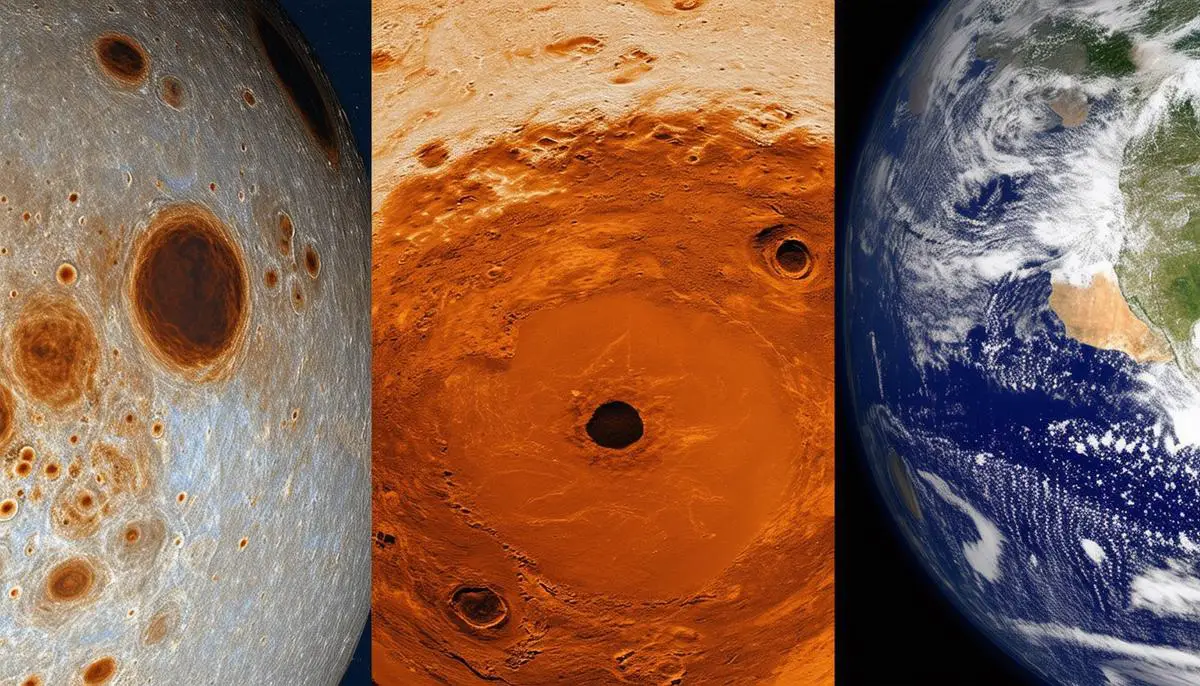
Giant Planets
Jupiter, the largest planet, is a gas giant composed primarily of hydrogen and helium. It lacks a solid surface, transitioning from gaseous outer layers to dense, liquid metallic hydrogen under intense pressure. Jupiter's atmosphere features colorful clouds and storms, notably the Great Red Spot. The planet has the strongest magnetic field in the solar system and 95 moons, including the Galilean moons: Io, Europa, Ganymede, and Callisto.
Saturn, known for its ring system, has a similar composition to Jupiter but with a higher proportion of helium. Its rings consist of ice and rock particles. Saturn's atmosphere has layered bands hosting powerful storms and jet streams. The planet's density is so low that it would float if placed in a large enough body of water. Saturn has 146 moons, including Titan, which has lakes and rivers of liquid methane and ethane.
Uranus, an ice giant, has a pale blue hue due to methane in its atmosphere. It contains water, ammonia, and methane ices along with hydrogen and helium. Uranus rotates on its side with an axial tilt over 90 degrees, causing extreme seasonal variations. It has 13 sets of faint rings and 28 moons, with Miranda and Ariel showing geological activity.
Neptune, the outermost giant, is deep blue due to atmospheric methane. It has supersonic winds reaching over 1,200 mph (2,000 kph) and large, temporary storms similar to Jupiter's Great Red Spot. Neptune is also an ice giant with a mix of water, ammonia, and methane ices beneath its atmosphere. Of its 16 moons, Triton stands out due to its retrograde orbit and geysers suggesting subterranean activity.
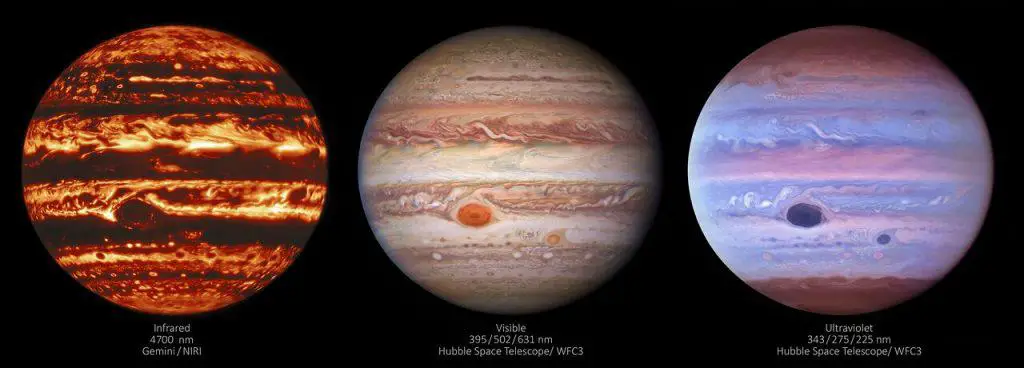
Dwarf Planets
Dwarf planets orbit the sun but do not dominate their orbital paths. They have enough mass for their gravity to mold them into a nearly round shape but lack the gravitational force to clear their neighborhood of other debris.
| Dwarf Planet | Location | Notable Features |
|---|---|---|
| Pluto | Kuiper Belt | Water ice mountains, vast plains, possible cryovolcanoes |
| Ceres | Asteroid Belt | Bright spots in Occator Crater (likely sodium carbonate) |
| Haumea | Kuiper Belt | Elongated shape, rapid rotation, ring system |
| Makemake | Kuiper Belt | Reddish hue, primarily methane ice surface |
| Eris | Scattered Disk | Highly erratic orbit, frozen methane surface |
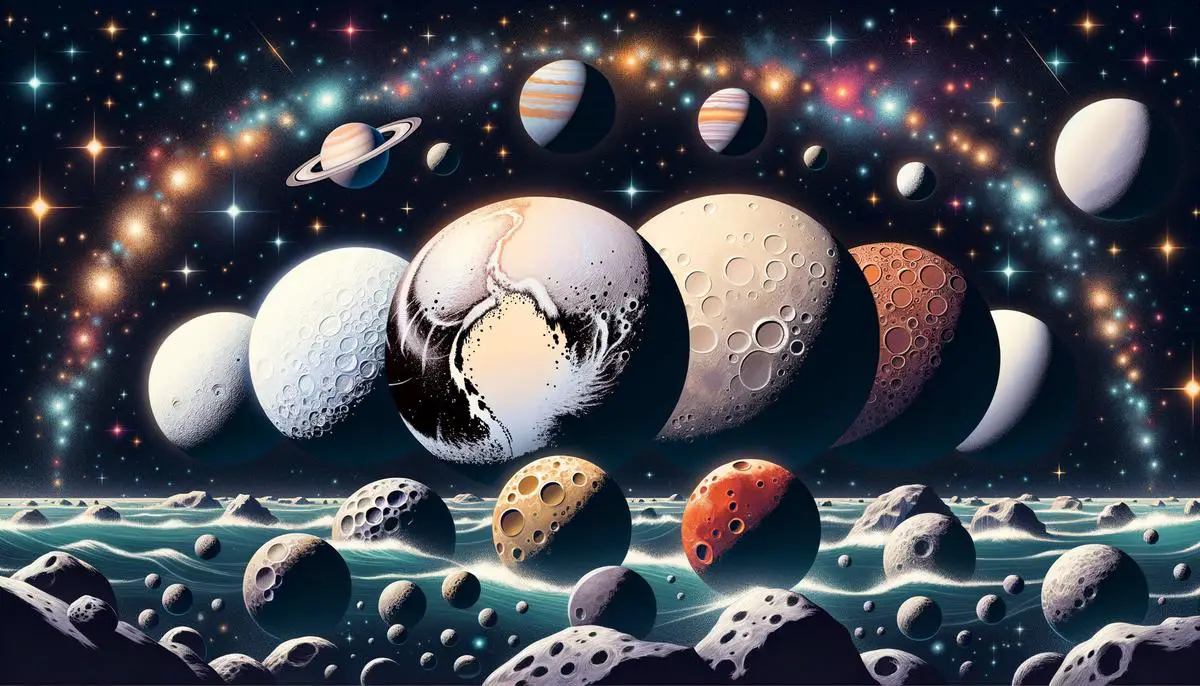
Exoplanets and Other Planetary Types
Exoplanets expand our understanding of planetary diversity beyond our solar system. They include various types:
- Hot Jupiters: Similar in mass or size to Jupiter but orbit extremely close to their parent stars, resulting in high surface temperatures.
- Rogue planets: Drift through the galaxy unbound to any star.
- Superhabitable planets: May offer conditions more favorable for life than Earth.
Some exoplanets demonstrate unique compositions, like GJ 1214b, a potential water world with a thick, steamy atmosphere. Located just 40 light-years away, it may contain exotic materials like 'hot ice' or 'superfluid water.'1
"The study of exoplanets continues to redefine our understanding of the universe, pushing the boundaries of our knowledge about planetary formation and the potential for life beyond Earth."
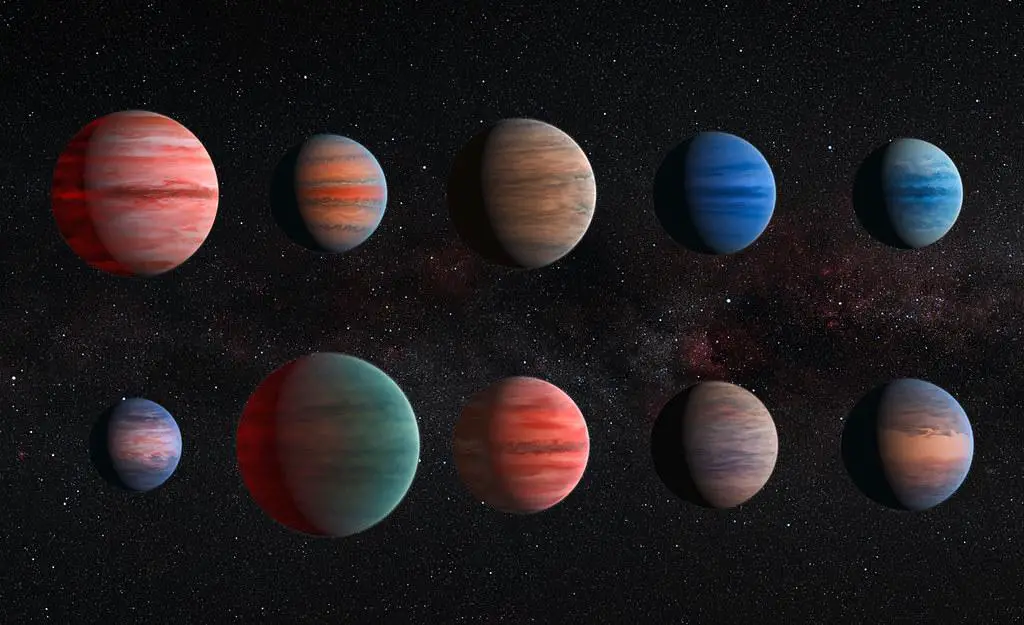
The diversity within our solar system and beyond is remarkable. Each planet, whether terrestrial, giant, dwarf, or exoplanet, contributes to our understanding of the cosmos. By studying these varied celestial bodies, we gain valuable knowledge about their origins and behaviors, enriching our appreciation for the complexity of space.
- Charbonneau D, Berta ZK, Irwin J, et al. A super-Earth transiting a nearby low-mass star. Nature. 2009;462(7275):891-894.
![]()
